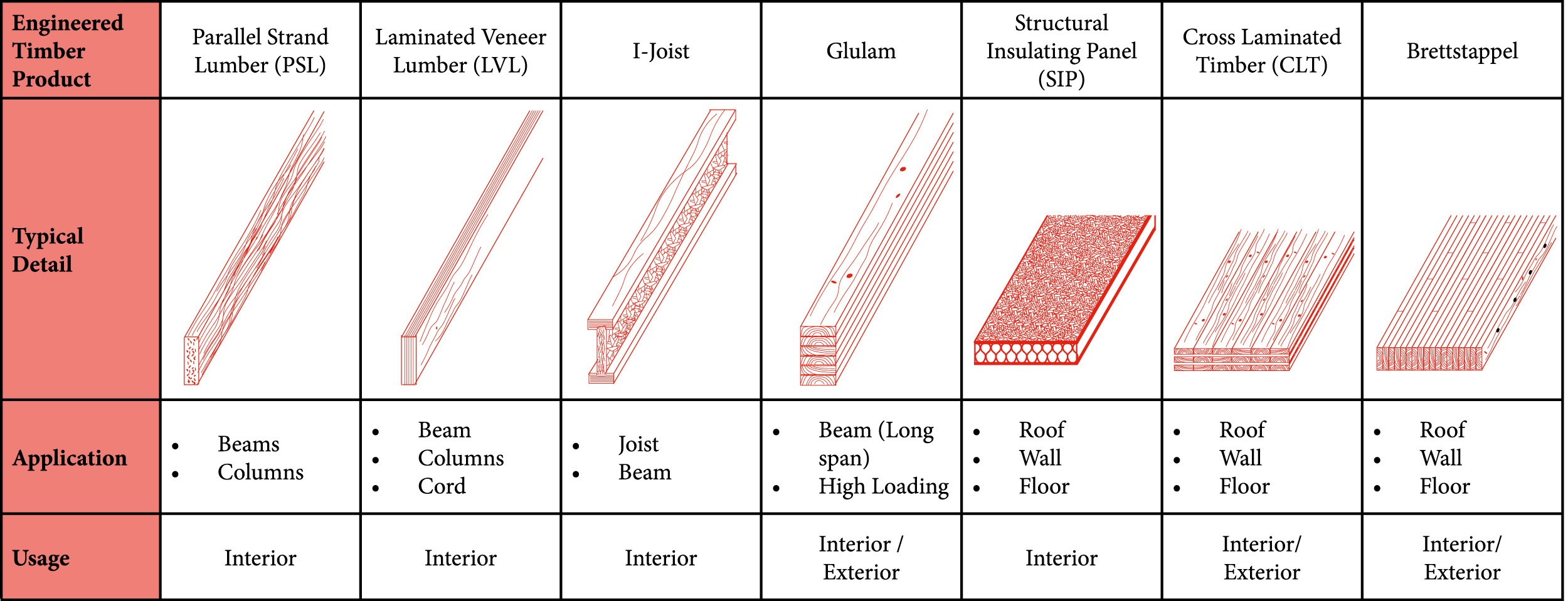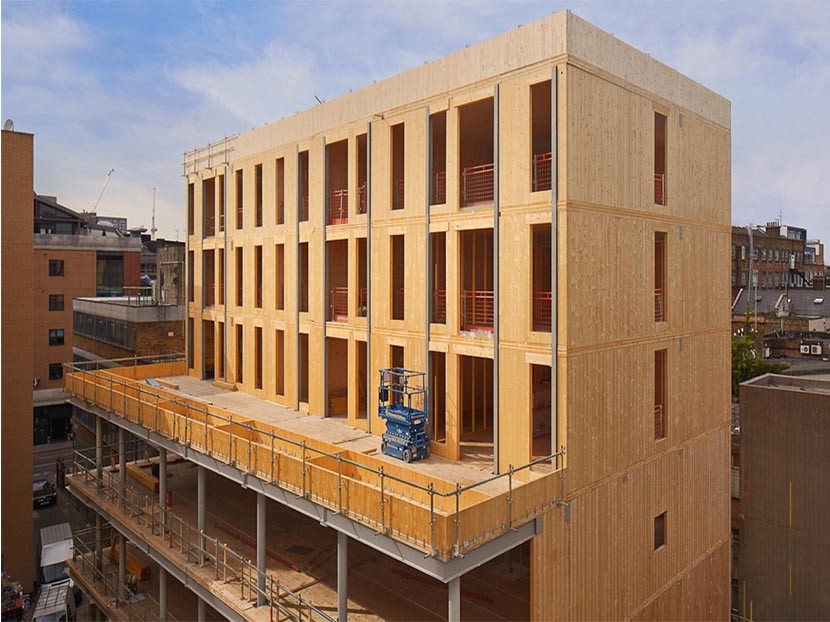

System Transition Wood Construction NL
Establishing a sustainable timber industry in the Netherlands
Aug 03, 2020

This project recognizes and promotes a shift in the construction sector towards reigniting the popularity of wood in building construction. By applying a systemic whole supply chain transition approach, it hopes to achieve a 30% increase in the use of wood in housing and office buildings in the Netherlands within ten years. In an attempt to make this a reality, the project mobilizes up to 100 different partners from governments, companies, advisories, and NGOs to achieve an annual carbon saving of a minimum of 5% of the Netherlands' yearly carbon footprint.

The construction sector is responsible for more than 23% of the total CO2 footprint globally and is primarily attributed to concrete use and production. However, with the help of Engineered Wood Products (EWPs), timber construction can significantly increase the sustainable use of wood and reinforce a scalable and sustainable forest economy.
EWP methods have advanced enough to replace steel and concrete as primary construction materials and significantly reduce the industry's carbon footprint by over 80%. Compared to other materials like concrete, steel, and brick, trees capture carbon relatively quickly and preserve it. Even after demolishing a building, the timber can usually be recycled or reused and continues to retain the carbon. The only way for the carbon to be released from a tree is to burn it, pulp it, or leave it to degrade naturally.
The forests that feed timber production can, if managed well, be entirely sustainable responsible, and support the establishment of an effective forest economy. In the Netherlands alone, we foresee a potential of more than 400 million trees planted for this purpose. We are looking for funding and partners to help us realize this potential.

Despite the benefits, the construction industry in most countries is not yet ready to make the transition to EWP. This inaction is mainly due to bottlenecks in the supply chain and differences between the ‘traditional’ building process and those that favor EWP. A wooden building requires different planning, management, and approaches to the unique material supply chain and resembles a chicken-egg dilemma.
In most cases, wood is more expensive and some processes more complex, inhibiting the growth of a forestry economy or for using timber in the construction sector.
The System Transition Wood Construction NL project explores directions to set up a complete forest-to-building supply chain for markets that do not yet have a mature wood construction industry. For starters, we begin building a partner network that:
To initiate this project, we start by executing the project in the Netherlands. This country has the correct contextual parameters for wood construction but does not have the tradition. We are aiming for 30% of all new housing in the Netherlands will be constructed out of wood in 10 years, resulting in 400 million sustainably managed trees.

Below are a few initial steps to set up this kind of supply chain and industry both domestically, but then supporting it to expand beyond national borders:
Step 1
Create a partner network/community in the Netherlands that collectively tackles the challenges in the entire building process - covering design and planning, alternative financing schemes, and increased domestic production capacity and local material sourcing.
Step 2
Expand the network into other European countries that do not have a solid domestic EWP market yet and build the supply lines to connect the networks to the wood sources and the production capacity.
Step 3
Expand the network to include countries around the world. Set up a system that can help build production forests from scratch and level the market for EWP applications.

EWP is the collective name for a range of different wood-based construction materials that involve the binding of particles, fibers, or wood veneers together with specialized bonding agents. Plywood and particle board are common examples of EWPs.
However, they can now be prefabricated and engineered to a high quality and remarkable precision and strength. Cross Laminated Timber (CLT) and Laminated Veneer Lumber (LVL) are becoming more popular in construction.
The timber quality for EWP is less critical than other wood-based construction types, meaning that more of the world's forests are suitable for this kind of application. For example, pine is typically used for low-grade construction applications. However, EWP production methods can convert it into high-grade construction materials, add value, and make it economically feasible to expand and better manage our forests.

To build an average family home from timber requires about 55 cubic meters of wood product. This amount of timber can grow within a single year on only 7 hectares of sustainably managed forest. In the Netherlands, 50.000 new houses are built on average every year. If only 30% of the house production were wooden houses, this would stimulate over 100.000 hectares of sustainable production forest, which is only 2.4% of the country's surface area.
We believe this 30% goal is reachable by 2030, translating to 400 million trees in total for the Netherlands alone.
Functionally, there is little difference between a fully concrete or wooden house and modern Engineered Wood Products (EWPs) are as structurally sound and safe. However, EWPs are not currently seen as a serious competitor to concrete in many parts of the world. Aside from the strength, there are also many other advantages to EWP over concrete in regards to health and long-term maintenance.
The entire project management for wood construction is different for EWP compared to concrete and steel, which drives up the price in markets where it is not shared. On the other hand, EWP can lead to a much shorter building time, far shorter time on site, much less waste and noise, and a higher level of quality and customizability.
The main advantages of EWPs are that they are:

Much of the forests in the Netherlands has been planted at the beginning of the last century as a production forest with mostly Pine, Douglas Fir, and Larch. The wood was envisioned to be feedstock for the paper and construction industry but this market was mostly lost to the cheap, high-quality wood from Scandinavia.
Dutch wood is currently available for manufacturing into EWP products, however, the supply chain, production capacity, and willingness to enable this transition are not. These dormant and potentially productive forests are underutilized, and there is no incentive to expand these forests.
Except Integrated Sustainability initiated this project after witnessing the state of the construction sector in Europe from its research effort. We aim to coordinate the process to boost EWP adaptation. Our experience in sustainable architecture, combined with our widespread partner network built since 1999, gives us the insights needed to understand the challenges we face in this transformation.
Measures of success:
The project seeks seed funding to help set it up, create the initial partnership, and kick off the supply chain development.
You can endorse the project as part of the One Trillion Trees Challenge here.
Aug. 3, 2020
Director
Head of Science, Industrial Ecologist